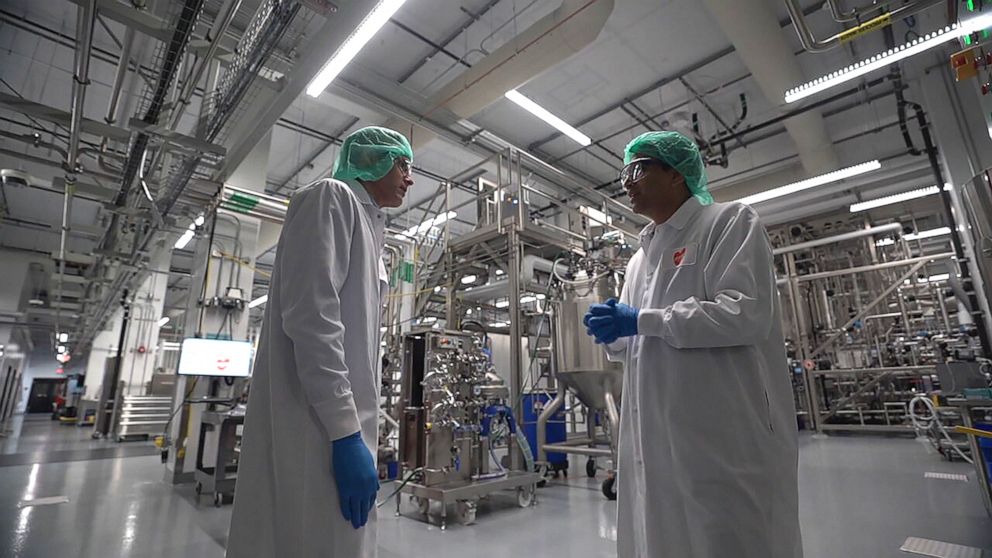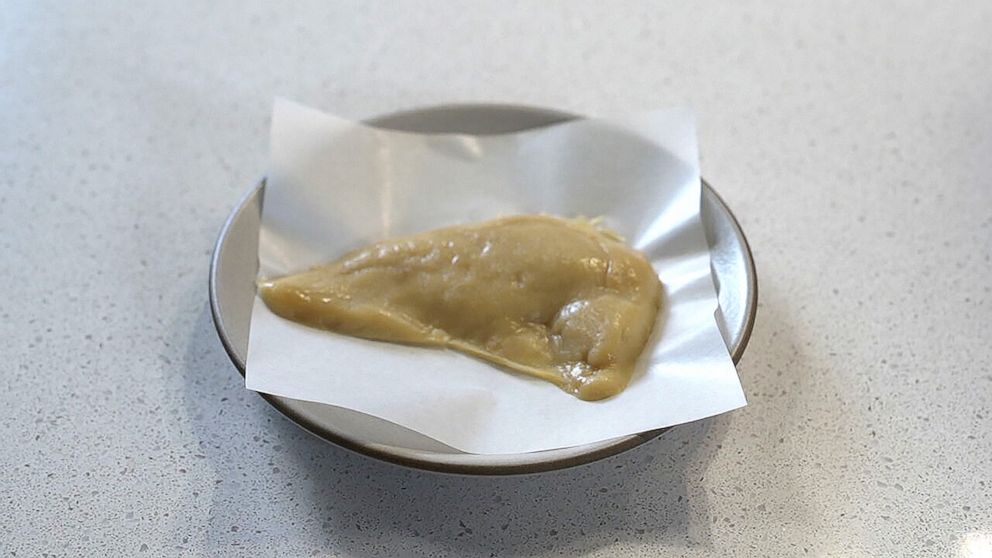Lab-grown chicken meat
Page 1 of 1 • Share
 Lab-grown chicken meat
Lab-grown chicken meat
Lab-grown chicken meat is getting closer to restaurant menus and store shelves
EMERYVILLE, Calif. -- A scientific quest to feed the world, protect animals and simultaneously cut down on greenhouse gas emissions is on the cusp of a major milestone in the U.S., advocates say.
In the last five months, the U.S. Food and Drug Administration has cleared two American producers of lab-grown meat to bring their products to market, finding "no questions" about the companies' claims the protein is safe for human consumption -- though critics still have concerns about the industry's financial viability relative to long-term output.
"That is a watershed moment because it's never happened before in the history of humanity," said Dr. Uma Valeti, founder and CEO of UPSIDE Foods, one of the approved producers.

UPSIDE Foods says it can produce 50,000 pounds of cultivated chicken per year at its Emeryville, Calif., facility.
ABC News
Regulators from the U.S. Department of Agriculture are now deciding how to label cultivated meat for public sale and inspect facilities that produce it. The guidelines are expected sometime this year -- a final hurdle before the products can hit store shelves.
Americans were estimated to consume roughly 75 billion pounds of red meat and chicken last year, according to USDA data. That's nearly 225 pounds per American.
"I think of our cultivated meat as the one that can fill the delta between how much meat we eat now and how much we're going to have to produce for the next 30 years," Valeti said.
Cultivated, or cultured-cell, meat is grown in steel bioreactors from animal stem cells that are fed a mixture of vitamins, fats, sugars and oxygen. The process results in real meat tissue without having to raise or slaughter an animal.

A chicken breast derived from cultured stem cells at UPSIDE Foods in Emeryville, Calif.
ABC News
Meat cultivating companies like UPSIDE and some environmentalists say the technique has the potential to dramatically curb greenhouse gas emissions from traditional animal farming, which also requires vast swaths of land and water as well as antibiotics for disease control.
ABC News was granted an inside look at the nation's first and largest cultivated chicken facility, run by UPSIDE Foods in an office park outside San Francisco.
"It takes two weeks to grow the equal to one chicken, a thousand chickens or 100,000 chickens," said Valeti, who is a cardiologist by training. What limits production is infrastructure.
EMERYVILLE, Calif. -- A scientific quest to feed the world, protect animals and simultaneously cut down on greenhouse gas emissions is on the cusp of a major milestone in the U.S., advocates say.
In the last five months, the U.S. Food and Drug Administration has cleared two American producers of lab-grown meat to bring their products to market, finding "no questions" about the companies' claims the protein is safe for human consumption -- though critics still have concerns about the industry's financial viability relative to long-term output.
"That is a watershed moment because it's never happened before in the history of humanity," said Dr. Uma Valeti, founder and CEO of UPSIDE Foods, one of the approved producers.

UPSIDE Foods says it can produce 50,000 pounds of cultivated chicken per year at its Emeryville, Calif., facility.
ABC News
Regulators from the U.S. Department of Agriculture are now deciding how to label cultivated meat for public sale and inspect facilities that produce it. The guidelines are expected sometime this year -- a final hurdle before the products can hit store shelves.
Americans were estimated to consume roughly 75 billion pounds of red meat and chicken last year, according to USDA data. That's nearly 225 pounds per American.
"I think of our cultivated meat as the one that can fill the delta between how much meat we eat now and how much we're going to have to produce for the next 30 years," Valeti said.
Cultivated, or cultured-cell, meat is grown in steel bioreactors from animal stem cells that are fed a mixture of vitamins, fats, sugars and oxygen. The process results in real meat tissue without having to raise or slaughter an animal.

A chicken breast derived from cultured stem cells at UPSIDE Foods in Emeryville, Calif.
ABC News
Meat cultivating companies like UPSIDE and some environmentalists say the technique has the potential to dramatically curb greenhouse gas emissions from traditional animal farming, which also requires vast swaths of land and water as well as antibiotics for disease control.
ABC News was granted an inside look at the nation's first and largest cultivated chicken facility, run by UPSIDE Foods in an office park outside San Francisco.
"It takes two weeks to grow the equal to one chicken, a thousand chickens or 100,000 chickens," said Valeti, who is a cardiologist by training. What limits production is infrastructure.
_________________


8DonCo

saurieng2016
 Re: Lab-grown chicken meat
Re: Lab-grown chicken meat
Rice wrote:I'm with you on this Love.
Its humane but who would buy it

LoveStory08
Page 1 of 1
Permissions in this forum:
You cannot reply to topics in this forum
 Home
Home